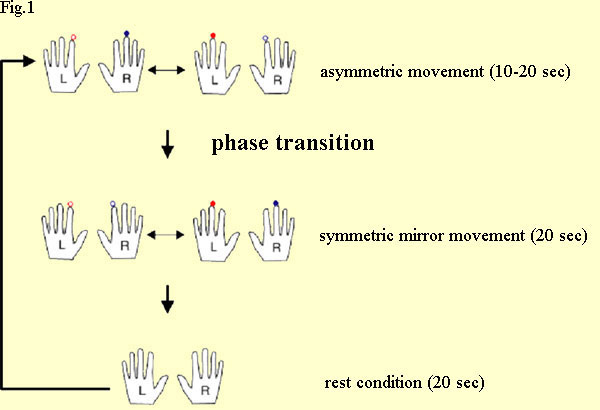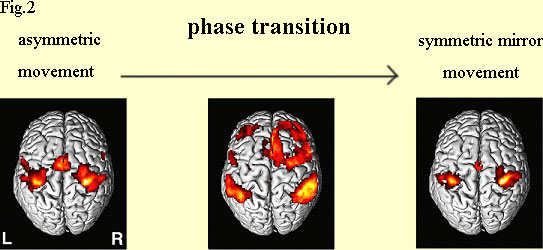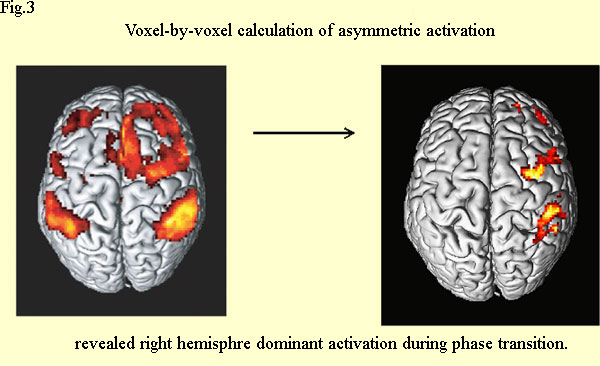Repetitive bimanual finger tapping movements tend towards mirror symmetry:there is a spontaneous transition from less stable asymmetrical movementpatterns to more stable symmetrical ones under frequency stress, but notvice versa (Figure 1). During this phase transition the interaction betweenthe signals controlling each hand (cross-talk) is expected to be prominent.To depict the regions of the brain in which cortical cross-talk occursduring bimanual coordination, we conducted event-related functional magneticresonance imaging using a bimanual repetitive-tapping task.Transition-related activity was found in the following areas: the bilateralventral premotor cortex, inferior frontal gyrus, middle frontal gyrus,inferior parietal lobule, insula, and thalamus; the right rostral portion ofthe dorsal premotor cortex and midbrain; the left cerebellum; and thepre-supplementary motor area, rostral cingulate zone, and corpus callosum.These regions were discrete from those activated by bimanual movementexecution (Figure 2). The phase transition-related activation wasright-lateralized in the prefrontal, premotor, and parietal regions(Figure3). These findings suggest that the cortical neural cross-talk occurs in thedistributed networks upstream of the primary motor cortex through asymmetricinterhemispheric interaction.
Aramaki, Y., M. Honda, et al. (2006). "Neural correlates of the spontaneous phase transition during bimanual coordination." Cereb Cortex 16(9): 1338-48


